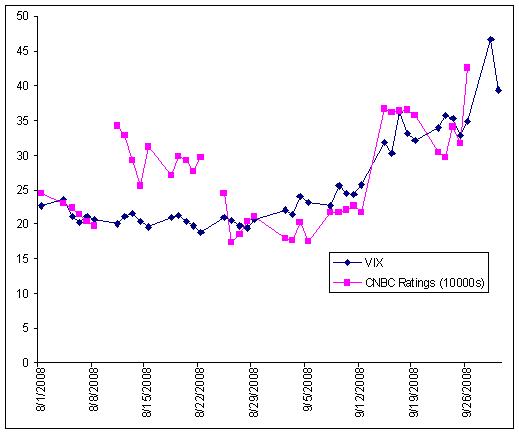September 30, 2008
CNBC Ratings Seem Correlated To Future Market Volatility

Following up on a crazy idea I had earlier.
The floating pink between 8/11 and 8/22 is CNBC's airing of the Olympics, which skews the data. Ignoring that, you can see a pretty clear relationship between CNBC's average daily ratings and market volatility (VIX). It also appears that the ratings anticipate the VIX by two days, or so.
I only have CNBC ratings to Friday, 9/26/08; but I have VIX data for the next two days. 9/29 was Black Monday, Dow -777.
These two are highly correlated. Starting from 8/23/08, the Pearson's r is .889, which, if remember my college statistics, is way better than a sharp stick in the eye. (If anyone out there knows a better test to use, please let me know.)
5 Comments